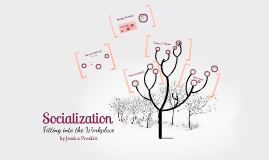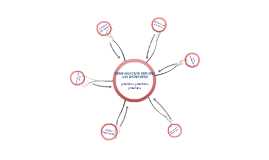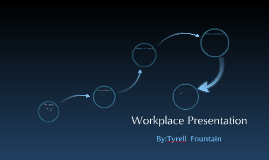Workplace presentation
Transcript: Gendered Communication in the Workplace Gendered Stereotypes in the Workplace KATIANA Stereotypes for Women sex object: defines women in terms of their sex or sexuality judgements of women workers based on their appearance and actions sterotyping women as sex objects conributes to sexual harrassment also used to define gay men and lesbians who are often perceived primarily in terms of their sexuality mother: both figurative and literal figurative: expect women to take care of the emotional labor for everyone - smile, prepare snacks, listen and support others 75% of women in workplace in "pink collar jobs" literal: women who have or plan to have children are seen as less serious professionals than men or women who aren't mothers. maternal wall: unexamined assumptions by coworkers or superiors about how women will behave once they become mothers Stereotypes for Women child: view of women as less mature, less competent, and less capable than adults. often masqueraded as "protecting women" iron maiden: a female professional who is independent, ambitious, competitive, tough. often perceieved as competent, but unlikeable and unfeminine Sterotypes for Women Stereotypes for Men sturdy oak: self-sufficient pillar of strength who is never weak or reliant on others can hinder men; think it is unmanly to ask for help, male workers will rule out consulting others for advice fighters: brave warriors who go to battle, either literally in war or metaphorically in their professional life stems from childhood training to be aggressive, and win at all costs this then translates into professional expectations to beat the competition. breadwinners: the person who solely earns money to support a family used to justify paying men higher wages than women Stereotypes for Men Why there are more stereotypes about women in the workplace Why there are more stereotypes about women in the workplace Live in a patriarchal society (male dominated) women were seen as the caretakers and men were breadwinners - change in this dynamic brought backlash as women were not taken as seriously as their male counterparts In WWI, women only worked because men were unable to feminine communicators seen as weak, while masculinity is dominant form of communication in the workplace i.e. aggressive, competitive, hard working even if women are masculine communicators, they are labeled negatively (bossy, pushy, bitchy) men have dominated the workforce, and seeing a women start to enter challenges them and thus they stereotype women more Ted Talk with Anne-Marie Slaughter DONYA To Slaughter, what does full equality mean? " I suggest that real equality, full equality, does not just mean valuing women on male terms. It means creating a much wider range of equality respected choices for women and for men. And to get there, we have to change our workplaces, our policies and our culture." To Slaughter, what does full equality mean? What does real equality look like in the workplace? In the workplace, real equality means valuing family just as much as work, and understanding that the two reinforce each other. "As a leader and as a manager, I have always acted on the mantra, if family comes first, work does not come second -- life comes together." -Slaughter What does real equality look like in the workplace? In policy terms, what does real equality mean? Real equality means recognizing that the work that women have traditionally done is just as important as the work that men have traditionally done, no matter who does it. In policy terms, what does real equality mean? How do same-sex couples shed light on juggling work and family? The same-sex perspective helps us see that juggling work and family are not women's problems, they're family problems. How do same-sex couples shed light on juggling work and family? How are they going to divide up breadwinning and caregiving responsibilities? Should one of them stop working or reduce hours to be home? Should they both change their practices so they can have more flexible schedules? Do they even have that option? Is it who makes the most money or who is most committed to their career? Or who has the most flexible boss? Re-socializing men??? According to Slaughter, "we're not going to get equally valued choices unless we change our culture, and the kind of cultural change required means re-socializing men." Men are socialized to believe that they have to be breadwinners and derive their self-worth from how high they can climb the career ladder. Re-socializing men??? Workplace Discrimination EMILIA GLASS CEILING GLASS CEILING - women and minorities hit an invisible barrier that limit them from achievements. It could either be that women are seen as mothers, which can cause the belief that a working mother would not be interested in advancing. It could also mean that women are seen in a sexual way, so that her competence is overlooked. (Gendered Lives) https://www.youtube.com/watch?v=ZYqL9BVFvnI GLASS WALL - metaphor for sex A

















